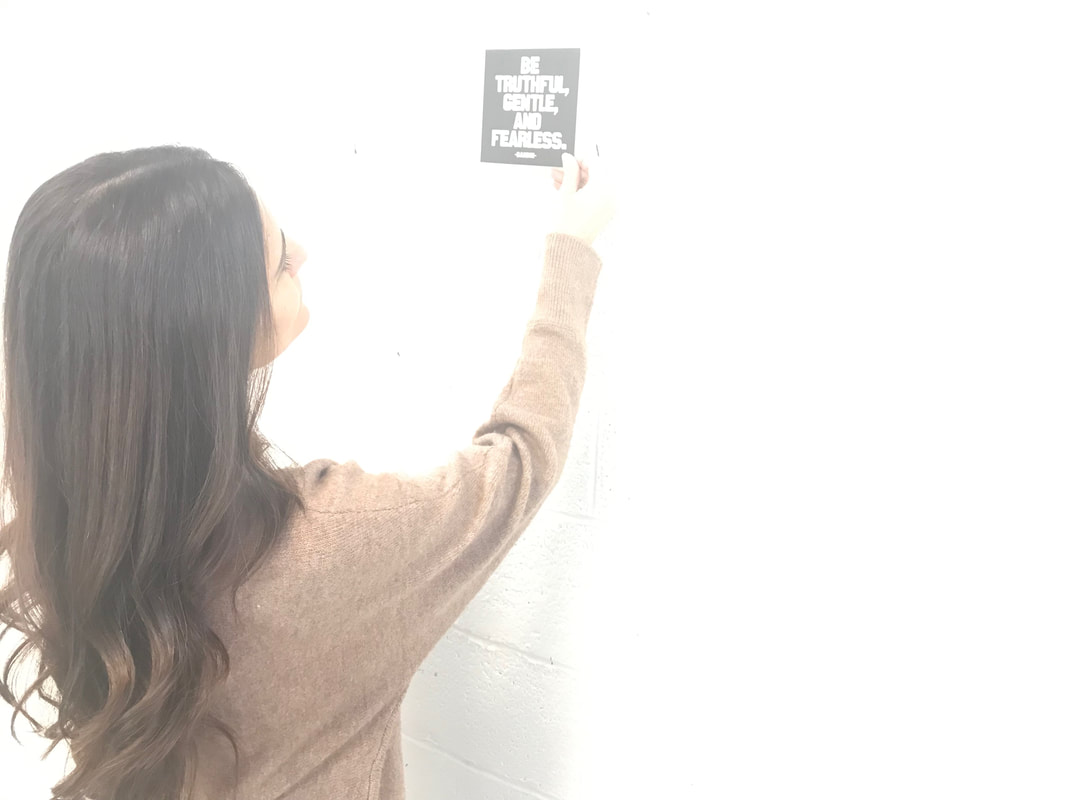|
Painting “fearless” is the best way I know to make work that is meaningful, sustainable, fresh, magnetic, beautiful and inspiring. “Calibrating your creative compass” simply means periodically taking the time to check in with yourself to make sure you are on the right track. The following 6 questions are designed to help you identify your motivations and how they influence your creative process. 1. Who are you painting for?
Making art can be vulnerable. It’s one thing to paint, but it’s an entirely different experience to submit your creation to public consumption and judgment. You may not realize how much your fear of public scrutiny influences the work you make or don’t make. Ask yourself: Are you painting for an audience? Who is your audience? Family? Friends? Art group? Art teacher? Partner? Collectors? And if you are painting for them, what is it that you are trying to capture in order to please them? What does that painting look like? Would you know it, if you painted it? Many of us work tirelessly to create "something", without a clear definition of what “something” actually looks like. One of my favourite homework assignments is to invite my students to bring to class and share 1 - 3 images of abstract paintings they love. This exercise can be extremely insightful in helping you understand your motivations, and what’s shaping your decisions. If you answered, “I paint for myself.” to the question above, this next question will shed light on how truthful your answer actually was. 2. What would I paint if no one were looking? This question can help you identify whether you are painting for yourself or for someone else. Take away the audience. What if you didn’t have to share this painting with anyone? Would it still look the same, or would it look radically different? Would you still use the same colours, as much or as little texture, bigger or smaller canvas? Would you be so hard on yourself? 3. What would you paint if every painting you made from this moment forward were already sold? Attaching a price tag to your work can change things if you let it. Some artists create a self-made trap by painting only what they think will sell. For me, this is not sustainable creativity, and certainly not as much fun. Take a moment to bask in the feeling that the world is abundant and it certainly has the capacity to support all kinds of art. Including yours! Spending less time thinking about what will sell and more time on creating work that comes from the heart. 4. What would I paint if this were the last painting I ever made? This question gives me goosebumps. What informs this question is the fact that I’ve moved around a lot. Take my experience on the Big Island of Hawaii for example: The evacuation order came suddenly, and I had no idea that the paintings that I created there would in fact, be the last paintings that I ever made in that place. The truth is nothing is permanent. We’re all moving. We’re all coming and going. Nothing stays the same. Not the places we call home, not the people we call family, not the bodies we’ve grown accustomed to. Everything is in transition. Knowing these truths, I ask you: What do you want to create? What is your artistic legacy? What marks do you want to leave on the canvas to stay here after you’re gone? 5. What would I paint if my studio and supplies were limitless? How is your pocketbook affecting your process? How are your attitudes regarding your creative space influencing the projects you choose? For many artists, the cost of supplies dictates how large, how freely, and how often they paint. But what if there were no price tags? Imagine you were being sponsored by the world’s greatest and largest art company and you had art supplies for the rest of your life at no cost. Would you paint differently? How? Take the same approach to your studio space: Imagine the studio space of your dreams. What if your studio was spacious, light-filled and rent-free? Would you paint differently? How? Is there anything you can do starting today to get you more in line with your ideals? 6. What would you paint if you weren’t afraid? Over the years, I’ve met thousands of artists paralyzed by fear. Fear they can’t draw, fear they don’t know “the rules”, fear of the blank canvas, fear that their idea isn’t good enough, fear they will be judged and ridiculed, and fear that they will create “proof” that they aren’t creative after all. But what if there was another way to create? What if angst, anxiety, concern, doubt, suspicion, unease and worry could be replaced by trust, calm, confidence, faith, happiness and even joy? What would your painting look like if you were motivated by the anonymous vs. the synonyms of fear? What are you afraid of? Write it down. Is it worth holding on to? Are you willing to keep holding onto it in order to keep getting more of what you’ve already got? Or is it time to transcend the fear and paint “fearless”? The choice is always yours. Comments are closed.
|
This blog was created to share my belief that the art-making process is a catalyst for transformation and personal empowerment. I am living proof.
Categories
All
|
